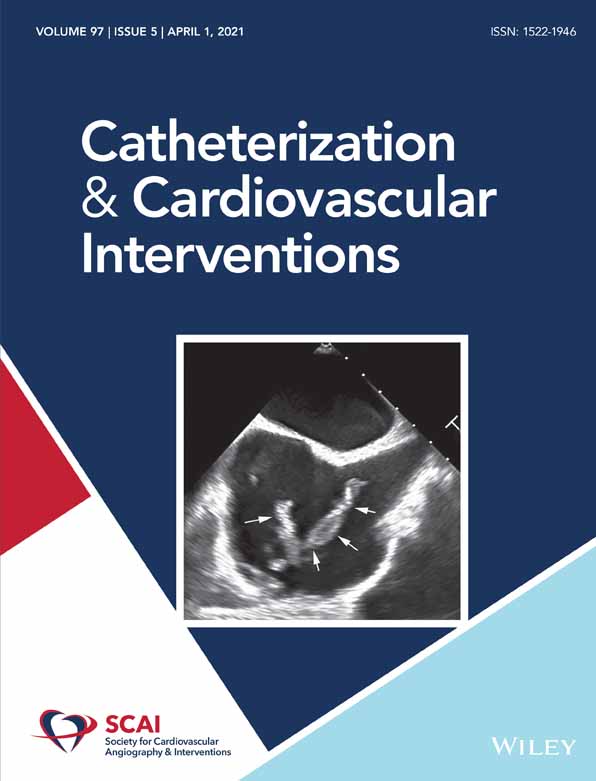Impact of preexisting coronary arterial disease in patients undergoing percutaneous mitral valve repair (MitraClip)
Abstract
Introduction
Percutaneous mitral valve repair with Mitraclip device has been approved for the treatment of symptomatic mitral valve regurgitation in patients deemed high surgical risk. It's unclear whether the presence of preexisting coronary arterial disease (CAD) affects the postprocedural outcomes of Mitraclip.
Methods
The study population was extracted from the 2016 Nationwide Readmissions Data (NRD) using the International Classification of Diseases, Tenth Revision, Clinical Modifications/Procedure Coding System (ICD-10-CM/PCS) for Mitraclip, preexisting CAD, and postprocedural complications. Study primary endpoints included in-hospital all-cause mortality, cardiogenic shock, acute myocardial infarction (AMI), acute kidney injury (AKI), stroke, acute respiratory failure, length of hospital stay (LOS), and 30-day readmission rate.
Results
A total of 2,539 discharges that had Mitraclip during the index hospitalization, 62.3% had history of preexisting CAD. Mean age was 78.5 years and 46.6% were female. Overall, the presence of preexisting CAD was associated with higher AMI (1.6 vs. 0.4%, p < .01), however, there was no significant differences in terms of in-hospital all-cause mortality (2.2 vs. 2.6%, p = .52), cardiogenic shock (3.4 vs. 4.1%, p = .39), AKI (14.7 vs. 13.6%, p = .43), stroke (0.9 vs. 0.5%, p = .31), acute respiratory failure (9.7 vs. 8.8%, p = .43), LOS (5.3 vs. 5.3 days, p = .85) or 30-day readmission rate (14.6 vs. 14.4%, p = .92). These results persisted after adjustment for baseline characteristics. The subgroup of CAD patients who received percutaneous coronary intervention (PCI) was associated with higher in-hospital mortality (22.5 vs. 2.0%, p < .01), cardiogenic shock (25.0 vs. 3.3%, p < .01), AMI (22.5 vs. 0.8%, p < .01), AKI (55.0 vs. 13.7%, p < .01), stroke (10.0 vs. 0.6%, p < .01), acute respiratory failure (45.0 vs. 8.8%, p < .01), and longer LOS (21.5 vs. 5.1 days, p < .01), however there was no significant difference in 30-day readmission rate (15.0 vs. 14.5%, p = .95).
Conclusions
Preexisting CAD was associated with higher in-hospital AMI post-Mitraclip but with comparable mortality and other morbidities. Patients who received PCI during the same index hospitalization had higher in-hospital mortality and morbidity.
CONFLICT OF INTEREST
The authors declare no potential conflict of interest.
Open Research
DATA AVAILABILITY STATEMENT
The data source of this study is the 2016 Nationwide Readmission Dataset (NRD). Which is a publically available dataset from the source (https://www.distributor.hcup-us.ahrq.gov/SpecialPages/Logon.aspx), however, sharing data might be subject to third party restrictions.




